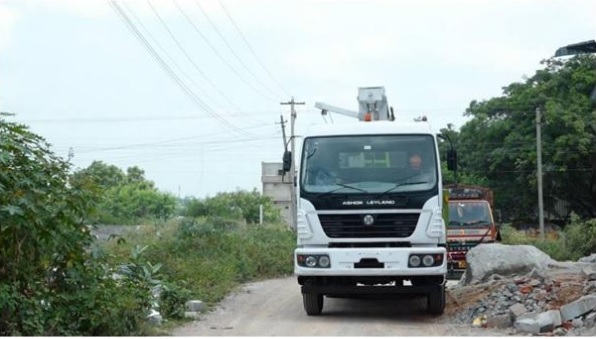A significant investment in specialist equipment is necessary to enter the water well drilling industry or grow your current activities, and this equipment will define your capabilities for years to come. The rig water well drilling are intricate pieces of equipment with a wide range of features, capacities, and configurations that have a big influence on operating economics and success. The choice has long-term effects on your reputation, customer satisfaction, and competitive positioning in your industry in addition to financial gains. Focusing on prices alone, or failing to consider key factors that establish whether equipment is really appropriate to their special needs, most beginners and even experienced operators commit expensive mistakes. Varying geological settings, strict rules, discerning clients, and intense competition are also only some of the specific challenges encountered by the water well drilling industry, rendering the selection of the appropriate equipment vital.
-
Understanding Drilling Depth and Diameter Requirements
The depth and diameter requirements for water well applications vary widely, thus any equipment selection process should begin with these basic criteria. Residential wells generally vary in depth between shallow (20 m) and deep borehole depths of more than 300 m depending on the characteristics of the local water table. Agricultural wells that provide irrigation systems often require a larger diameter to accommodate high capacity pumps that convey large amounts of water to grow crops. Industrial and municipal wells require even greater diameters and depths, and need rigs with greater capabilities than those of residential drilling equipment. Think about your target market carefully because deep agriculture or commercial projects require different equipment than shallow household wells. Realistic equipment specifications are informed by the typical well depths in your operating location, which are revealed by geological surveys and regional water authority statistics.
-
Geological Conditions Dictate Equipment Capability
Geological knowledge is essential for choosing the right rig because different rock formations and soil types call for very diverse drilling techniques and equipment specifications. Coastal plains and river basins typically have soft alluvial soils that are easy to drill with lighter rigs utilizing direct circulation or rotary techniques. Granite, basalt, and limestone are examples of hard rock formations that need strong rigs with significant penetration force and suitable drilling technology, such as down-the-hole hammer systems. Equipment adaptability is challenged by mixed formations that show strata of differing hardness; rigs that can successfully adjust to changing circumstances inside a single borehole are necessary. In order to avoid bit binding and borehole collapse, clay layers present distinct drilling challenges that need sophisticated mud systems and sufficient circulation. Different strategies are needed for fractured rock zones than for solid formations, which has an impact on drilling fluid selection and casing programs.
-
Mobility along with Transportation Factors
Transportation logistics are an important factor that significantly impacts operational efficiency and costs because water well drilling necessitates transporting equipment between job locations on a regular basis. Trailer-mounted rigs are very mobile; they can swiftly set up at residential houses with restricted access and pull behind regular trucks. By combining drilling equipment with transport vehicles, truck-mounted designs lower the equipment required for site-to-site travel and complicate mobilization. Heavy equipment trailers are necessary for long-distance transportation between projects, although track-mounted rigs perform well on soft ground and difficult terrain. Think about typical site access constraints in your service area; for example, home driveways, secluded sites, or small rural roads all create unique issues. Road laws that impact which rig configurations you may move lawfully without costly special arrangements include weight limits, width restrictions, and permit requirements.
-
Power Source and Energy Requirements
Most drilling rigs are powered in a number of different ways each possessing distinct advantages and disadvantages which significantly influence the suitability of the sites, flexibility in their operation and costs. Diesel motors are ideal in remote locations that do not have an electrical connection as they can be used anywhere without a power infrastructure. Electric motors are less noisy and less emitting, and therefore, they should be used in homes and other sensitive areas of the environment where the emission of diesel is hazardous. Hybrid systems, which are a combination of electric drilling motors and diesel generators, create a balance between the environmental issue and the efficiency of the operation and the independence. Operating costs are directly impacted by fuel consumption; efficient engines lower costs during lengthy deep well drilling operations. Because underpowered rigs struggle in hard formations and excessive power burns fuel needlessly, power needs must be in line with real drilling demands.
-
Budget Reality Beyond the Sticker Price
The financial commitments of the purchase of water well rigs can be well understood, thus preventing budget overruns and ensuring sustainable business planning that helps in long-term operational success. Though the initial purchase price attracts, it is just one segment of the total acquisition costs that can be summarized to include initial spare parts, set-up, commissioning and shipping. Financing terms have a significant effect on the actual costs; a 30-50 per cent addition of nominal equipment price by interest charged during the term of the loan. In long term drilling programs, operating expenses like fuel, hydraulic fluids, drilling fluids and tools accumulate at a high level affecting profitability estimates. Budgeting has to consider both the regular and unexpected maintenance costs as annual service can be five to ten percent of the equipment value. Insurance payments provide protection to investments, yet it is associated with periodic payments that differ based on the value of the equipment, the level of coverage and operational risk evaluations.
-
Regulatory Compliance and Permitting Requirements
Drilling water wells is subject to stringent regulations that safeguard groundwater supplies, public health, and environmental quality, all of which equipment must efficiently support. Water authorities’ drilling permits usually demand for equipment that satisfies strict requirements for operational capabilities, construction quality, and contamination protection. Well construction standards dictate suitable casing, grouting, and completion processes that your rig must accommodate through appropriate equipment and auxiliary systems. Drilling fluid disposal, site restoration, and sensitive area preservation are all governed by environmental standards, necessitating equipment features that facilitate compliant operations. Regional variations in operator license rules may necessitate qualified individuals or specialized training in order to operate water well drilling equipment legally. Operator protection, emergency systems, and hazard controls are among the equipment elements specified by safety rules that rigs that do not comply with them are not permitted to operate.
-
Technical Support and Training Availability
To make money efficiently, equipment must be operated effectively by means of proper training and continuous technical support as various complex equipment is converted into effective business tools. To achieve maximum efficiency of the machine and prevent accidents it is necessary to carry out intensive training of the operators, among which are safe operation, routine maintenance, troubleshooting, and emergency procedures. The quality, length, and expense of dealer or manufacturer training programs vary greatly; some offer little teaching, while others offer a great lot of support. By equipping your staff for regular maintenance, component replacement, and simple repairs, you may lessen your reliance on pricey outside service providers. The quality of technical documentation, such as maintenance plans, parts catalogs, operation instructions, and troubleshooting manuals, promotes long-term independence and appropriate maintenance.
Conclusion
Making a decision to purchase water well drilling equipment is a large business that must be carefully considered in the technical, financial, legal, and practical perspectives. These main points furnish you with the knowledge to make informed judgments that suit the abilities of your equipment to the needs of your company, the market conditions and the conditions under which you operate. You can save costly mistakes and set your water well drilling rig manufacturers on a long term and profitable path to fulfill the basic water demands of communities by taking time to study, ask difficult questions and be truthful with your situation.



